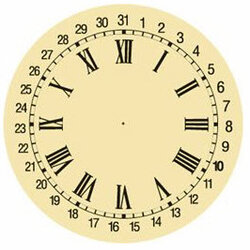The Why of a Reverse Barbershop Movement

A reverse barbershop movement is a clock motor that revolves the hands counterclockwise rather than clockwise. Why a reverse barbershop movement would even be worth thinking about besides as a trick or novelty is a practical inquiry to ask, as is the inquiry of exactly how the gadget happened so called. Let's have some enjoyable exploring the solution to these inquiries.
First, the reverse barbershop movement is called that because a device operating in reverse shows up regular when viewed in a mirror, and barbershops made use of to install clocks on the back wall so that clients could read the moment by looking in the mirror at the front of the shop. So, hands that revolve counterclockwise appear to be rotating clockwise when viewed with a mirror, equally as the mirrored image of your right-hand man appears to be a left hand.
Currently, the hands need to point at something of recommendation for the viewer to grasp the time at a glance, as well as this something is conventionally a collection of characters or signs installed on a dial. Thus, for this illusion to be efficient, the dial additionally has to be a reverse time one. If figures are utilized they need to be printed backwards, and they also need to continue counterclockwise around the dial area.
Keep in mind that mirrors mirror originals in a left-to-right manner but do not swap up with down. Stereoscopic vision as well as the eyes' centerpiece is the presumptive reason behind this regarded habits of shown light rays. So though the barbershop dial prints numbers in reverse, they still have twelve up at the top as well as six near the bottom.
Movement producers tend to split their offerings into 2 camps based on how much power is expended. Smaller clocks have smaller, lighter hands and consequently do not require a lot of energy to provide adequate torque. But larger clocks (about those with diameters surpassing 12"-- 14") need to enhance the power to get the hands to rotate effectively.
Yet because of the restricted market for a reverse time movement, the producer isn't going to trouble with two variations; they're going to make every one of these motions high torque. This way, all dimensions run off the same motor, several of them diminishing the battery a little faster than needed.
The interesting point is that reverse time dials do not show up in all sizes; in fact, we understand of only 2 size selections, one in the 6"- diameter variety and also one around 11" in diameter. However the high torque activities will suit minute hands of nearly 18" in size. This is in fact a subtle motivation for the suppliers for clockmakers to exercise creative thinking, campaign, and also flexibility.
For example, you could opt for, state, an 11" turn around dial however pair it with 14" hands! This would look absurd on a conventional clock, yet given that the barbershop clock is a novelty already, why not fine-tune the gimmick even better?
Or, you might attempt constructing a massive wall clock a good 3 feet across or two. You would not locate a reverse dial in this size, however you could kind of roll your own by purchasing a centering cup as well as stenciling kit from the same manufacturer. (They might describe the package when it comes to a tower clock.).
The only method with this project would be stenciling the figures in reverse and obtaining them appropriately placed. After that you have to think about a very large mirror for the encountering wall surface.
There are added directions you could go in, such as including a (non-functional) pendulum utilizing a motion accessory for this function available from the vendor. And also you can also capitalize on a Universal Power Supply alternative and also keep the battery as a backup. All the same, the reader needs to currently recognize far better the why a reverse barbershop movement.

© Copyright Quartz Clock Mechanism